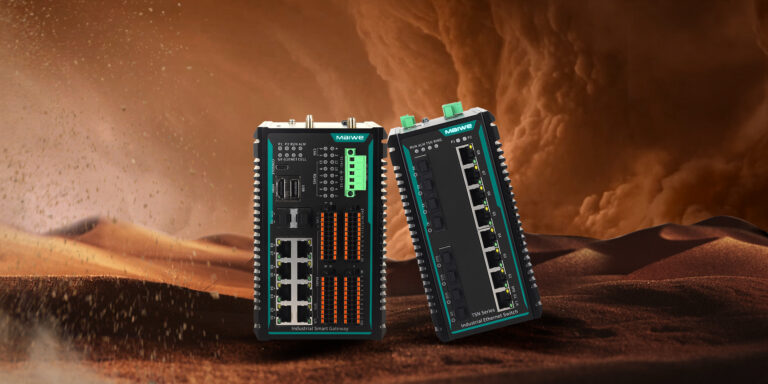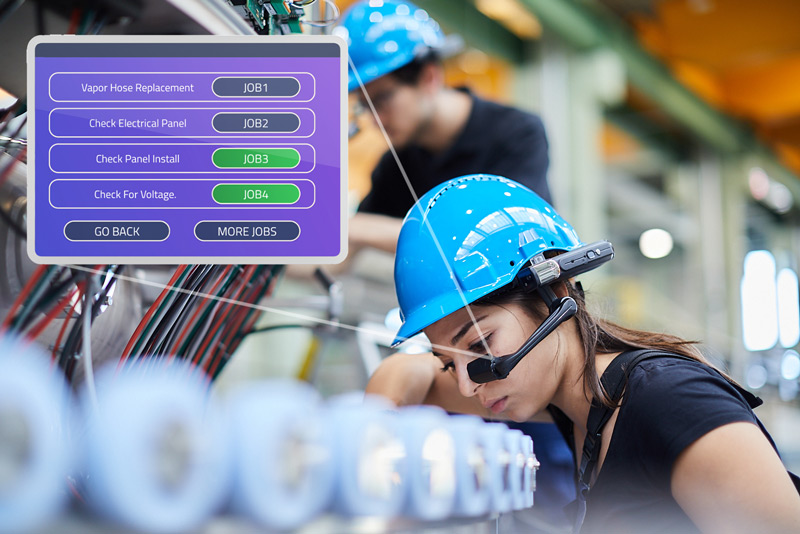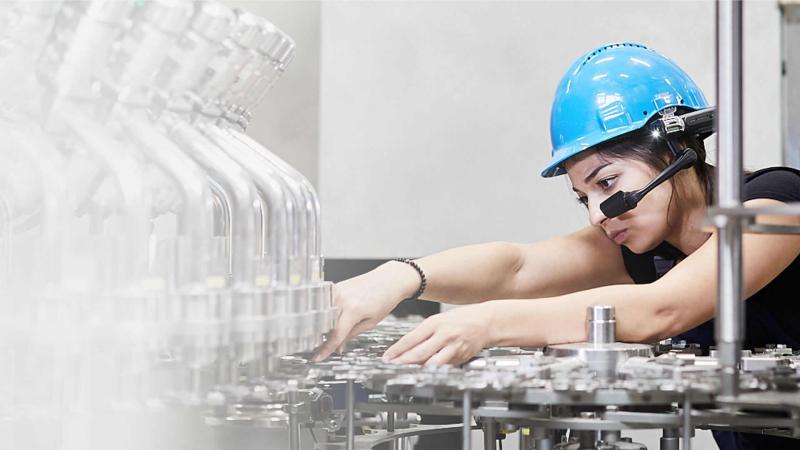In the era of ubiquitous Ethernet connectivity, Ethernet switches are now being deployed outdoors in remote locations to monitor and manage field equipment. This includes applications across offshore rigs, pipelines, power stations, water and wastewater facilities, bridges, tunnels, wind farms, and more. As the use of Ethernet in harsh environments becomes more prevalent, the need for rugged switches that can withstand challenging conditions is paramount.
MAIWE’s industrial Ethernet switch portfolio of Layer 3, Layer 2 managed, unmanaged, Bypasses, wireless, and TSN boast exceptional anti-interference capabilities offering versatile port configurations, equipped with high-performance industrial switching chips. Engineered with industrial-grade wide-temperature designs, they ensure stable and reliable operation in challenging industrial environments. Benefit from power redundant backup support and MW-Ring redundancy technology, delivering a swift self-healing time of <20ms to effectively prevent communication interruptions, making MAIWE switches the ideal choice for seamless industrial networking.
- Extreme Temperature Threats
Recent years have seen record temperatures in many countries or regions. High heat conditions affect network connectivity and data transmission between locations. The same can be said for the harsh cold of the winter months. In an industrial environment, ethernet industrial switch is used in outdoor locations where the temperature is rarely controlled, which can lead to power supply issues, such as voltage fluctuations or power surges, and hardware components overheat and failure.
Wide Temperature Range Specifications: Manufacturers of industrial switches specify a wide operating temperature range (-40°C to 75°C, for example) to ensure that the switches can function reliably in a variety of environmental conditions.
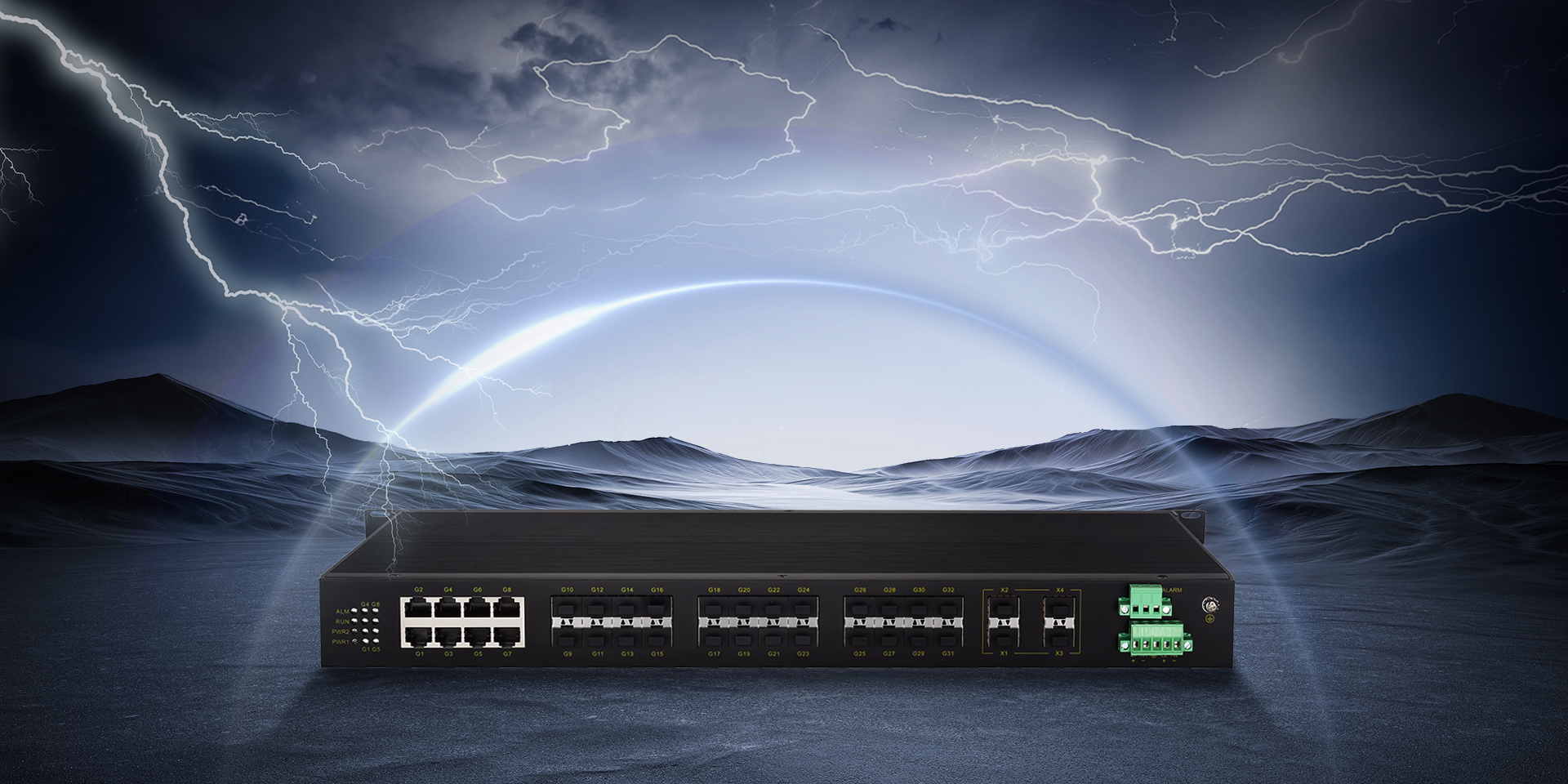
- Thunder and Lightning Threats
A direct lightning strike can cause catastrophic damage to outdoor network switches, leading to hardware failure and downtime. Lightning strikes can cause power surges that can damage the switch’s internal components, power supply, and connected devices. Even if the switch has surge protection, a direct strike or nearby strike can exceed its protective capabilities. Lightning produces electromagnetic fields that can induce currents in nearby cables and equipment, causing EMI. EMI can disrupt network signals and interfere with the operation of outdoor network switches.
EMI Protection Surge Protection: Industrial switches often include built-in surge protection mechanisms to safeguard against power surges caused by lightning strikes or electrical disturbances. This helps prevent damage to the switch and connected devices.
Certifications and Compliance: Industrial switches are often certified to meet industry standards and regulations for lightning protection and electromagnetic compatibility (EMC), ensuring they can withstand and operate safely in thunderstorm conditions.
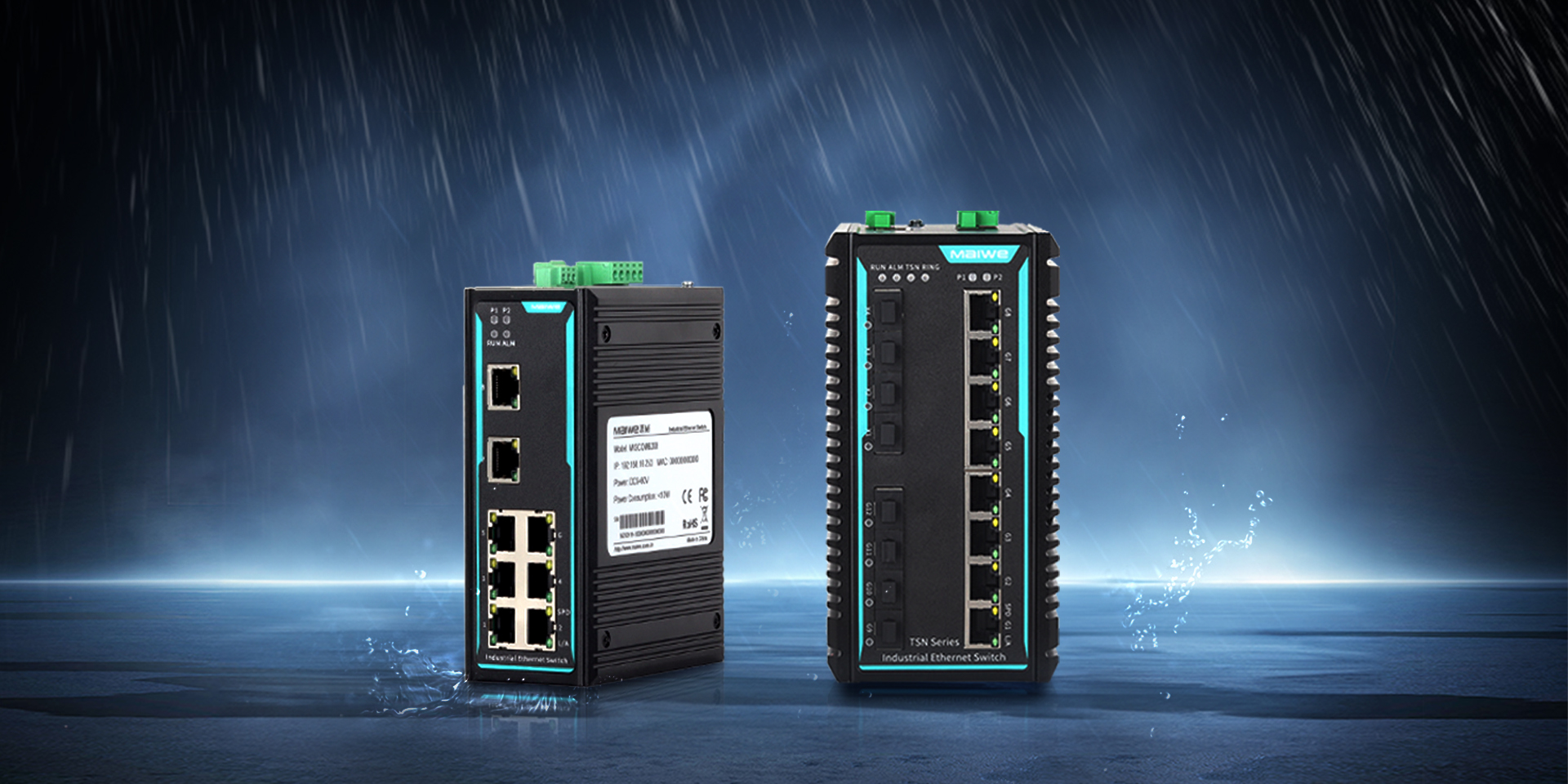
- Rainstorm Threats
Water Ingress: Heavy rain can lead to water ingress into outdoor network switches, potentially causing short circuits and damage to internal components. This can result in network downtime and hardware failure. Corrosion: Exposure to rain moisture can accelerate metal components’ corrosion in outdoor network switches. Corrosion can degrade the switch’s performance and lead to reliability issues.
IP Ratings: Industrial switches are often rated for IP (Ingress Protection) to indicate their level of protection against dust and water. Higher IP ratings indicate greater protection against water ingress, with ratings such as IP65 or IP67 being common for outdoor industrial switches.
| IPX0 | This rating indicates that the device has no special waterproofing capabilities and that liquids are free to enter the interior of the device. |
| IPX1 | At this rating, the device can withstand the effects of vertical drips but may be subject to liquids in other situations. |
| IPX2 | The switch device is protected against water drops at a 15 degree angle, but may likewise be affected by liquids in other situations. |
| IPX3 | This rating indicates that the equipment is protected against water spray at 60 degrees and is suitable for some outdoor environments. |
| IPX4 | Equipment at this rating can withstand jets of water directed at the equipment from any direction, providing more comprehensive liquid protection. |
| IPX5 | The equipment can withstand the spray of a water jet gun, which is useful for environments that require regular cleaning, such as industrial equipment. |
| IPX6 | Equipment with this rating can withstand large jets of water, such as high-pressure cleaning. This rating is typically used in scenarios that require strong waterproofing capabilities, such as marine equipment. |
| IPX7 | The switch device can be immersed in water for a short period, typically 30 minutes. This waterproof capability is suitable for some outdoor and underwater applications. |
| IPX8 | This is the highest level of waterproofing where equipment can be continuously submerged under specified conditions, such as a specific depth of water and time. This type of protection is typically used in underwater equipment, such as diving equipment. |
Corrosion-resistant Construction: Industrial switches are built with rugged materials and construction to withstand physical stress and environmental hazards, including rainstorms. This includes corrosion-resistant materials and designs that can withstand exposure to moisture.
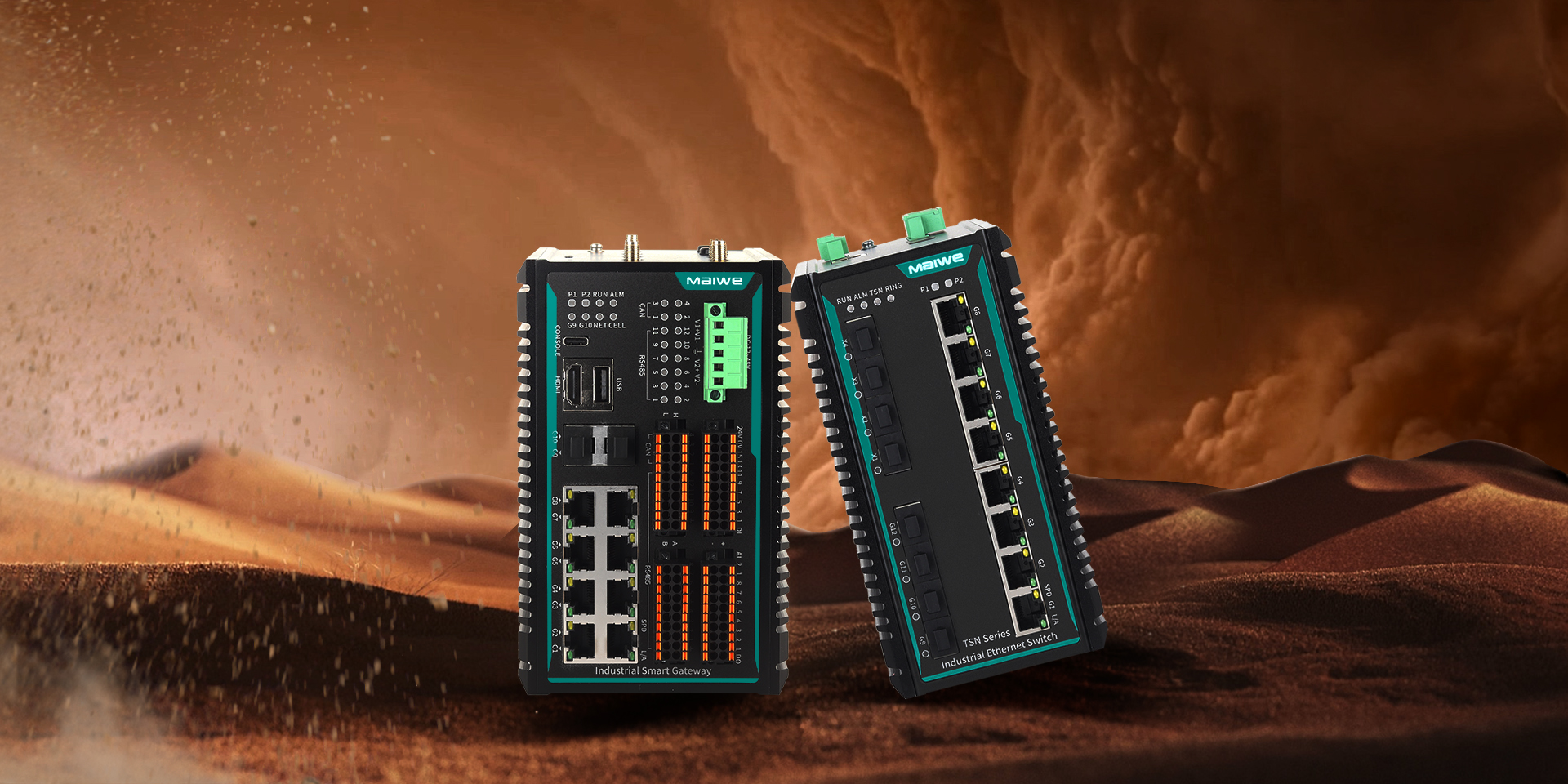
- Sandstorm Threats
Dust and Particulate Matter: Sandstorms can pose serious risks to industrial Ethernet switches, particularly in desert or arid environments. The abrasive nature of sand particles can infiltrate equipment, leading to overheating, component damage, and even system failure. To protect your Ethernet switches, consider using ruggedized enclosures
IP Ratings: Industrial switches are often rated for IP (Ingress Protection) to indicate their level of protection against dust and water. Higher IP ratings indicate greater protection against water ingress, with ratings such as IP65 or IP67 being common for outdoor industrial switches.
| IP0X | The switch equipment has no special dust protection and that solid objects can freely enter the interior of the equipment. This is undesirable in environments where hermetic protection is required. |
| IP1X | The switch device can prevent solid objects larger than 50mm from entering. Although this protection is relatively weak, it is at least capable of blocking larger objects. |
| IP2X | The switch device will protect against solid objects larger than 12.5mm. It may be adequate in some less demanding environments. |
| IP3X | The switch protects against solid objects larger than 2.5mm. This protection is suitable for most indoor environments. |
| IP4X | The switch is capable of preventing solid objects larger than 1mm from entering. This is useful for protecting the equipment from small particles. |
| IP5X | The switch equipment is capable of preventing smaller dust particles from entering, which is not complete dust protection but is sufficient for many industrial and outdoor environments. |
| IP6X | This is the highest level of dust protection, where the switch equipment is completely dust-proof and no dust, no matter how small, can penetrate. This type of protection is usually used in very demanding special environments. |
If you are looking for switches that can work in relatively harsh environment, keep in mind the specifications like temperature range, IP code, EMC protection, materials etc,. Some outdoor rated network switches feature redundant power supply options, allowing them to continue operating even if one power source is affected by a lightning strike or power surge. MAIWE has been committed to the industrial communication field for over 23 years, serving tens of thousands of customers and connecting millions of products, with extensive experience in service under extreme weather.
Contact sales@motherwell.net.au
#MotherwellAutomation #MotherwellConnects #Maiwe #EthernetSwitches
